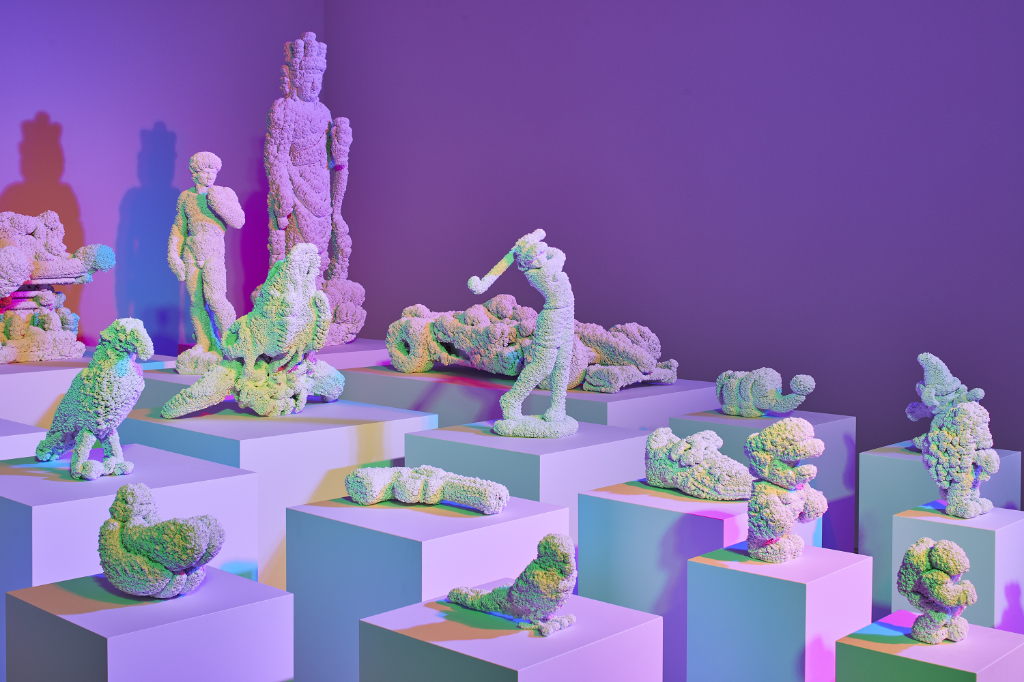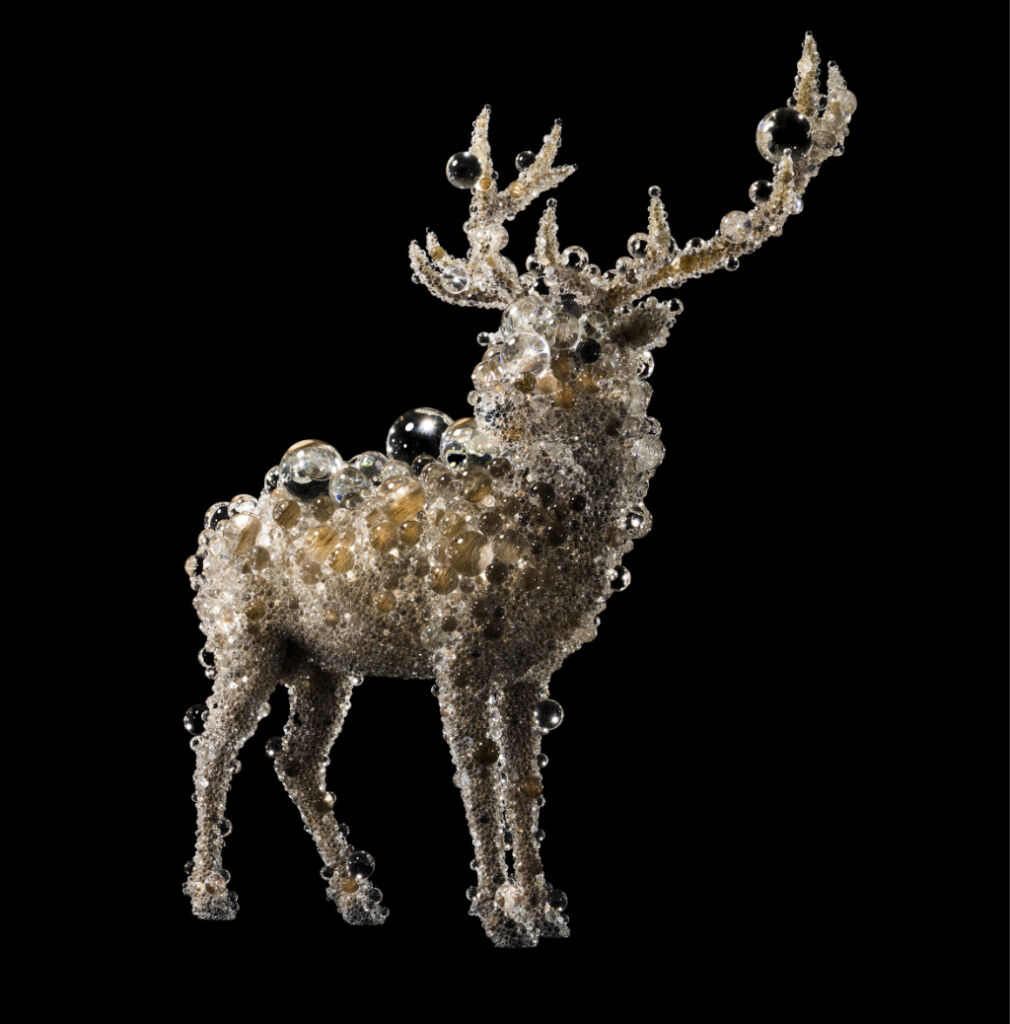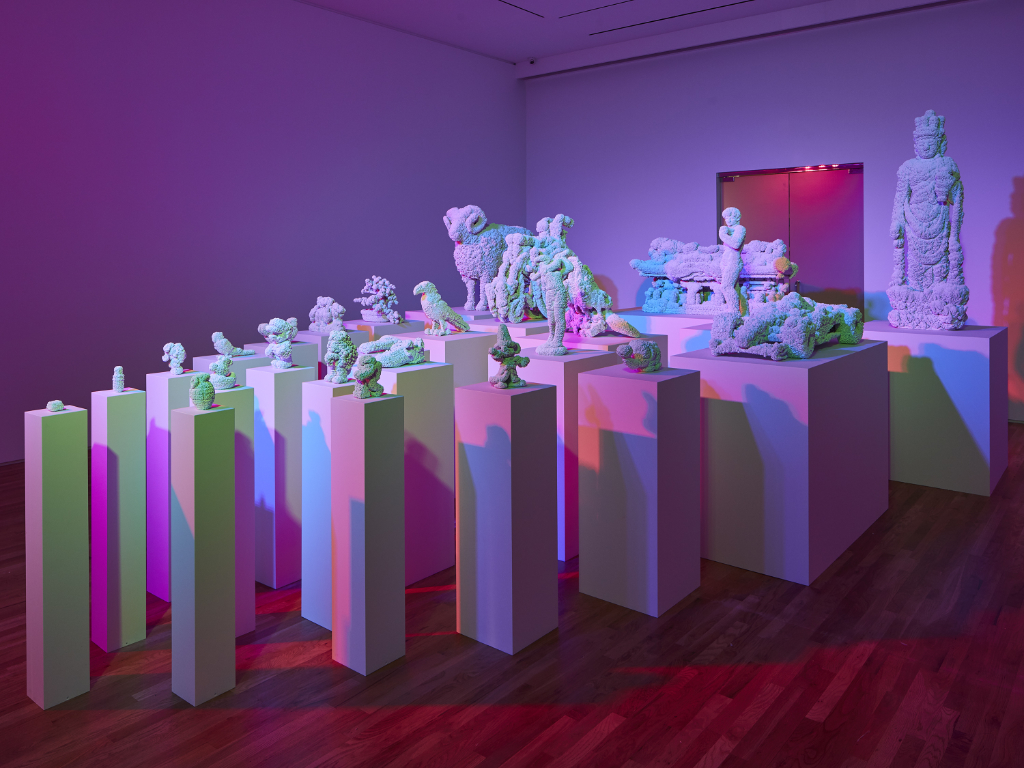Interview by Bilge Hasdemir

Artist Kohei Nawa explores the potential of different surfaces using various mediums and materials, such as glass beads, polyurethane foam, prism sheets, glue, and plaster. Nawa’s widely known series, Pixcell (a term he coined), comprises found objects, such as taxidermied animals, covered by glass beads, creating a visually pixelated effect. Nawa merges the biological concept of the “cell” with the “pixel.”.
This combination connects the most minor and fundamental units of different life forms: the biological and the digital. In Nawa’s works, both cell and pixel appear in a cultural context that manifests a particular dynamic between real and virtual, organic and inorganic, numerical and sensory, whole and part, and material and intangible.
His latest exhibition, and a first solo show in the United States, Trans-figure, opened recently in the Pace Gallery and included new works from his ongoing series Direction, Ether, PixCell and Villus. In the series PixCell, the fascinating use of different-sized glass beads on the surface with a subtle reference to the cellular structuring of Life-Worlds creates an effect of viewing the work through many optical prisms. This optical illusion momentarily forces the viewer to rethink the laws of nature and the image that s/he perceives as given with full of expectation and the one depicted in work.
On the other hand, Nawa’s Direction and Ether series focus on the different forms of the physical manifestation of gravity. However, both still play with the visual perception of space and objects. In Direction, monochromatic, parallel straight lines created by dripping inky paint come together to form a surface on the canvas that plays on the viewer’s senses of scale and gravity.
At first glance, the illustration of gravitation on a canvas with slowly dripping paint appears to cast doubt on human sensory systems, whether solid or fluid, falling or standing, hidden beneath the hypnotic geometric patterns.
Similarly, Ether consists of works through which the artist creates new ways to visually represent the phenomenon of gravity in the seemingly weightless form of sculpture. As if by hinting at the values of Japanese culture and spirituality, the droplets seem to sit in perfect balance and harmony.
Primarily inspired by distortion and transformation, Kohei Nawa manipulates the viewer’s perception using various materials and techniques. He challenges the conventional repositories of dimension(ality) and expands the viewer’s experience at different levels.




You have a PhD in Fine Art Sculpture, and your work delves deep into sensation and materiality. How and when does the interest in these come about?
I was under the influence of my father, who ran workshops that made handmade children’s toys, so I always had a sense of using personal belongings or daily necessities as materials for artwork. This is the main reason I chose sculpture as a major at university.
PixCell is a mesmerising series where physical objects are acquired through the internet and encapsulated in a layer of spherical cells that work as magnifying glasses. The process homogenises the surface texture and depth perception for each piece. However, the assemblage of the spherical cells seems complex. What are the most significant challenges you face while developing these pieces?
There were two challenges, “concept challenge” and “technical challenge”, which took much time to accomplish. I have achieved these little by creating many artworks over time. I have been trying to reach intuitive expression, like the consistency between concept and actual presentation — directly connecting the viewer’s feeling — regardless of age, country and genre.
Many of your projects refer to natural elements or physical phenomena (Biota, Prism, Catalyst, Ether, Liquid) but with a very prominent digital take on them. What is your relationship with the natural world that is increasingly blending with the digital?
I think digital technology and computers will be destined to go along with nature, human consciousness and the laws of space. As digital technologies become more sophisticated, these relationships become closer. I feel that digital technology, machinery and computers are not far from nature but are the beginning of our understanding of the laws of nature. Based on the Cell concept, it can also be said for my artwork.
For Trans-Figure, the exhibition at PACE Gallery, you have created works that draw onskin’se physical and sensory properties to question and explore the distinction between material and intangible experiences. Could you tell us more about the intellectual process behind?
When I was a university student, I used the computer and the internet for the first time, and it felt to me that the world would be in the wave of information technology in the future. Moreover, the sense of handling computerised information made me feel special. To realise and keep those experiences, I created PixCell and Villus.
What do you expect from the viewer that interacts with your pieces?
I expect a connection of feeling. I think that the physical properties of materials are being explored and that synchronising the sense of creators with viewers is the most important. Sharing new experiences or feelings should be the art in this age.
What is your chief enemy of creativity?
It sometimes irritates me that images and creativity can’t come out quickly, but only a little can be achieved due to restrictions like physical aspects, budget, and restricted time.
You couldn’t live without…
My iPhone and computer. I couldn’t stand it without computers, the internet, and my smartphone.






